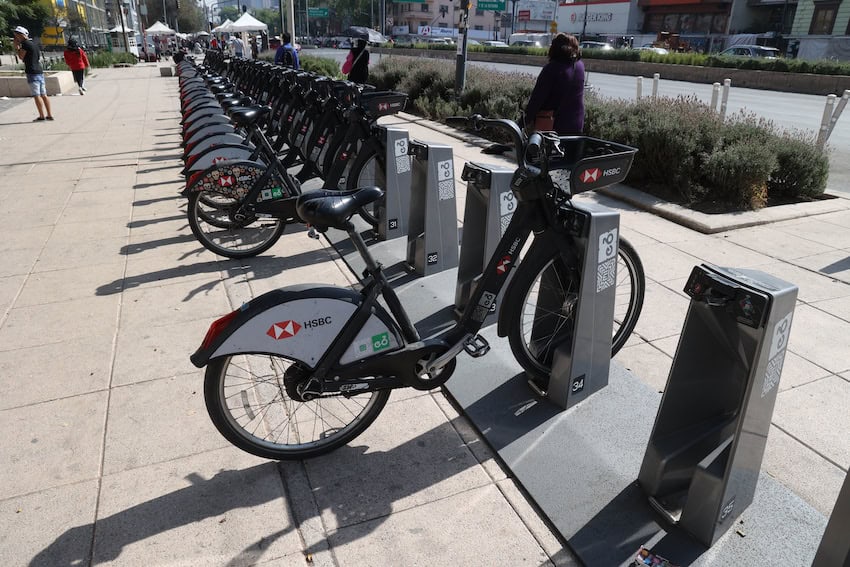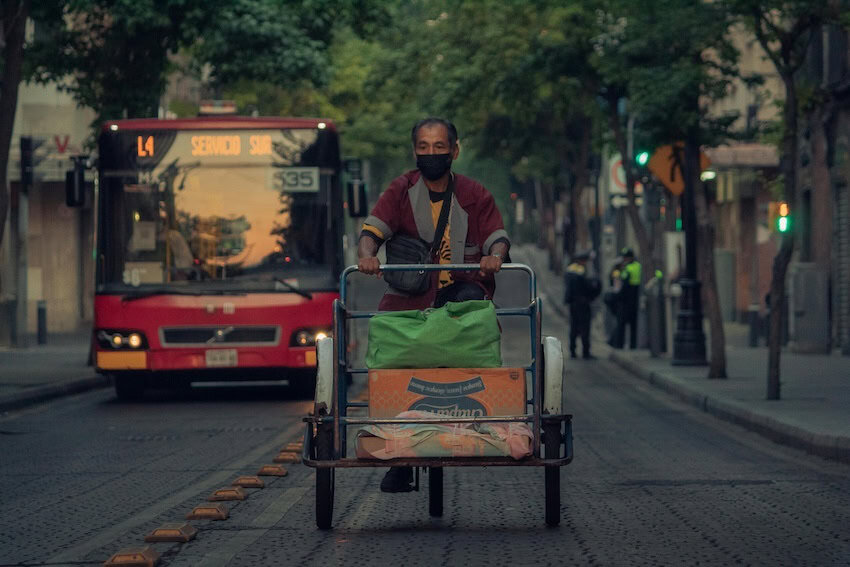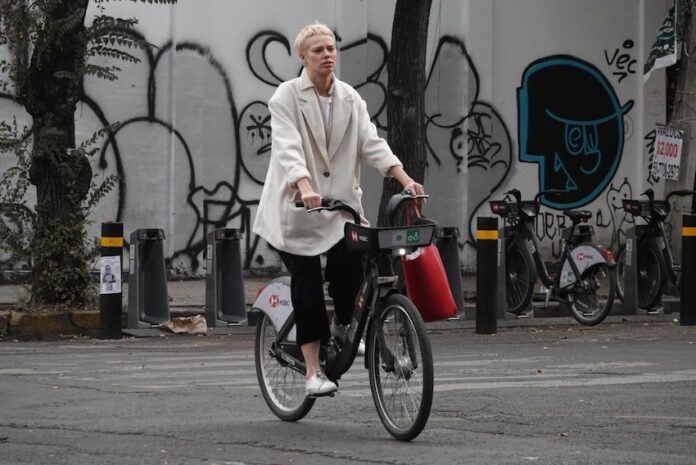Jesica Gutiérrez has used the Ecobici service as her main means of transportation in Mexico City for over seven years, especially as a way to get to her workplace. With stations across six of the capital’s boroughs, this bike rental service is a state initiative to promote bicycle use in one of the most polluted cities in the world.
Born and raised in the Mexican capital, Gutiérrez knows that biking here comes with several obstacles. “In the last few months,” she told Mexico News Daily, “there have been some serious deficiencies [in the service].” Broken bicycles and little availability make it even harder to get to work on time. “But, well,” she sighs, “I use it because it’s practical.” Her main route is a five kilometer (three mile) ride, from residential Colonia Del Valle to Google HQ in Lomas Virreyes.

It takes Gutiérrez about 45 minutes to ride from her home to the office. During a normal week, she makes this trip twice a day. Even though many streets in Mexico City are not adapted for cyclists, she prefers to use an Ecobici rather than taking public transportation: “It’s too crowded in the mornings,” she says, “and the tumult makes me uncomfortable.”
Avoiding stressed and angry crowds — and potential for sexual harassment — Guitérrez decides to ride at her own pace to work every day. Although she admits the Ecobici service to be practical, she laments that “there is no civic culture of respect for cyclists.” From cars parked in bicycle lanes to drivers behaving aggressively toward cyclists on main avenues, riders face severe obstacles across the capital. Is Mexico City really safe for cyclists?
Mexico City was not built for bikes
In the 20th century, the capital expanded rapidly, and city planners prioritized car traffic rather than cyclists, creating massive highways that are still unsafe for bikes.
Launched in 2010, the Ecobici program was an attempt to make a proper space in the streets and dignify cyclists in Mexico City. Ever since then, over 124.7 million kilometers have been ridden across the capital, as documented by the Ministry of Mobility (Semovi) in the program’s anniversary this year. The institution equates this figure to having traveled around the world over 3,000 times in 15 years.
Today, Mexico City has a total of 689 Ecobici stations, “the largest and most widely used system in Latin America,” as the service reported in its 2019-2024 Performance Report. Although this seems like great news that would put Mexico City at the forefront of global mobility, the death figures from cyclist accidents put us far behind that position.

Mexico City weighs heavily on cyclists’ shoulders
Gutiérrez reports that she has not had any accidents in the seven years that she has used Ecobici. Moreover, she is certain she spends less than half the time on a bike than she would in a private car. Accidents, however, are common: newspaper El Sol de México reported that 2022 was the deadliest year on record for cyclists in Mexico City. Numbers have been similarly high since, with 20 cyclist deaths reported in 2024.
Since 2007, according to the Mexico City municipal government, protected cycle lanes have been constructed in both residential and business-oriented neighborhoods. But despite the government being ready to take this step of inclusion and environmental significance for the city, we capital residents, simply aren’t: in our minds, cars will always have the priority, which has led to a death toll of 1700 users up to date, as reported by news outlet N+.
“Cyclist deaths are linked to insufficient infrastructure, poor or no bike path planning and lack of training for public and private transport drivers, among other factors,” the report stated.
Despite how alarming these figures are, Mexico City’s Environment Ministry has promoted the use of bikes for over a decade now. With the creation of Traffic Regulations designed specifically for cyclists, Mexico City now has a network of over 530 kilometers of bicycle lanes, including exclusive lanes and shared lanes.
The Muévete en Bici program, which has helped riders enjoy main avenues like Reforma on Sundays, is just a facet of the entire apparatus the government has implemented across the capital. And how could they not? Bicycles have “[…] the most energy-efficient system: it doesn’t pollute, and its cost is extremely affordable,” Manuel Suárez Lastra, director of the Institute of Geography, told Gaceta UNAM. And still, Mexico City weighs heavily on cyclists’ shoulders.

How to ride safely in Mexico City
Much of the love-hate relationship that Capitalinos have with Mexico City has to do with the fact that it is practically impossible to walk around the city without being afraid of being run over. Even today, Mexico City has not been fully adapted to accept cyclists into its everyday traffic dynamics.
And yes, cyclists still stand against the system that marginalizes them simply by riding their bikes. Taking all of these issues into account, as a person who works in the Roma-Condesa area, I can’t help but notice that most people on bikes around here are foreigners — mostly unaware that these things happen every day.
How to ride a bike safely in Mexico City, you may ask? Well, as rudimentary and crude as this may seem, remember: Mexico City is not Amsterdam, folks. Most bike lanes are practically invisible these days. In more gentrified areas, the government has tried to actually define the dividing lines properly — but that is not the case in the entire city.
If, however, you do use a bike to transport yourself across town, the safest way to go is just to stick to the bike lane. Also, consider these as your cyclist’s mantras:
- Wear helmets and anything to protect vulnerable body parts
- Always follow the traffic lights
- Avoid main boulevards and avenues, where people usually speed
- Try not to dodge or speed against cars
- Do not ride in the wrong direction or if you’re sleepy
And above all, remember that, although cyclists do have right of way in the streets, local drivers usually do not respect anyone — not even other drivers. With that in mind, try to enjoy your rides in bike-friendlier neighborhoods. Roma Norte, Polanco, La Juárez and Condesa are great places to start!
Andrea Fischer contributes to the features desk at Mexico News Daily. She has edited and written for National Geographic en Español and Muy Interesante México, and continues to be an advocate for anything that screams science. Or yoga. Or both.
